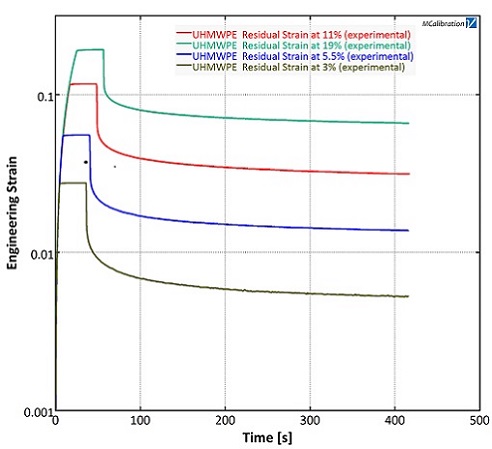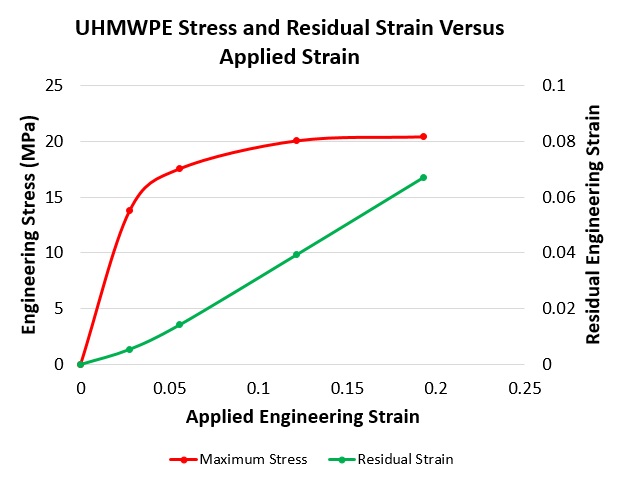Technical Challenge
Residual strain is the permanent deformation that remains after removing the stress from a test sample. This deformation can be important for product design and material selection. Standard mechanical test procedures do not take into account the condition of the specimen after stress has been removed.
Polymer materials frequently exhibit a small elastic region, and therefore it is important to measure the residual strain in order to avoid permanent deformation in products composed of these materials.
Veryst Solution
Veryst developed a method for measuring residual strain in tension down to a fraction of a percent. A specimen is loaded to a predetermined strain, held for a short period of time, and then unloaded to zero stress. Using Digital Image Correlation, the strain is accurately measured over the course of the recovery period specified by the tester. Veryst performed several representative residual strain tests with ultra high molecular weight polyethylene (UHMWPE). The material was loaded to peak strains of 19%, 11%, 5.5%, and 3% and allowed a recovery period of approximately 5 minutes, as shown in Figure 1. The UHMWPE shows significant residual strain even when loaded to 3% engineering strain.
This measurement of residual strain allows material models both to predict a material's mechanical response and to provide deformation limits for a material. Figure 2 shows the findings of our residual strain testing of (UHMWPE), and the relationship between engineering stress and residual strain. The left axis is peak applied stress, and the right axis is the residual engineering strain from the applied stress. As seen in the plot, significant permanent deformation occurs after the peak stress has passed the yield stress.

